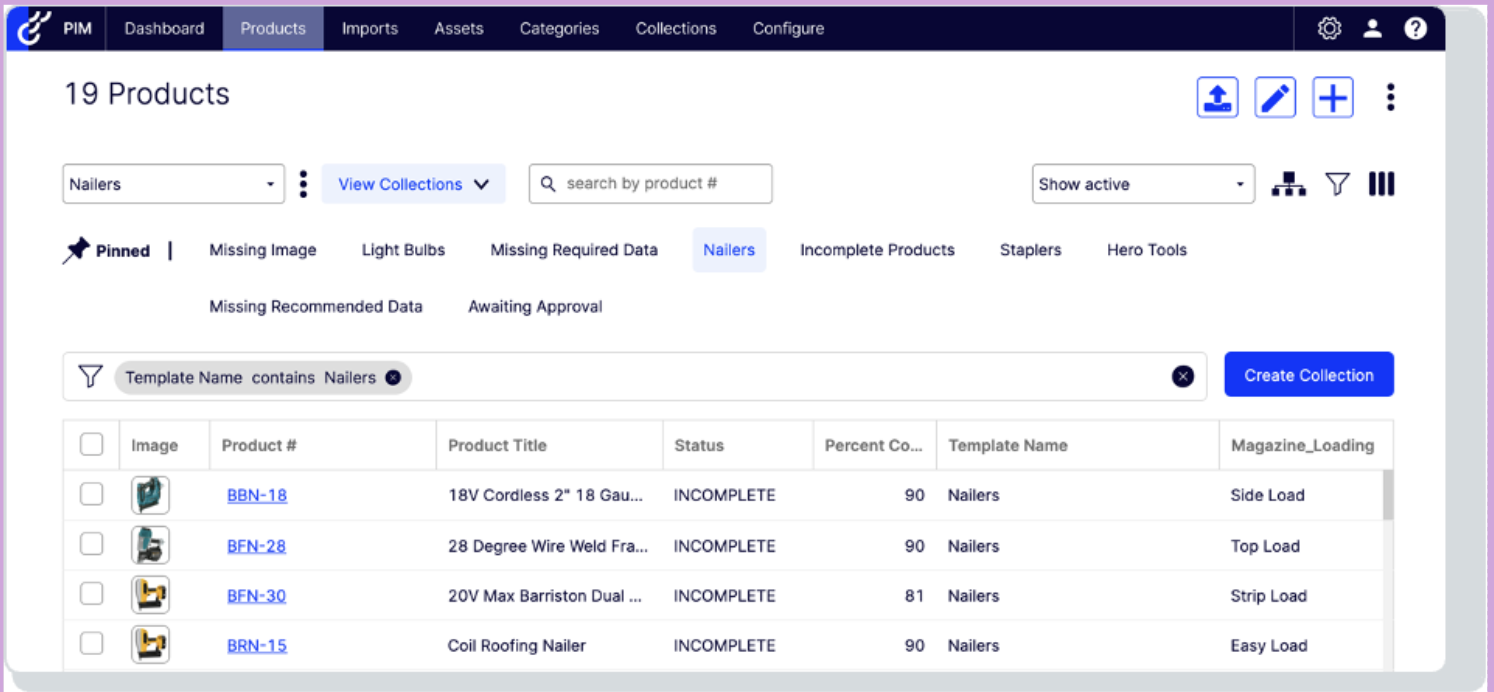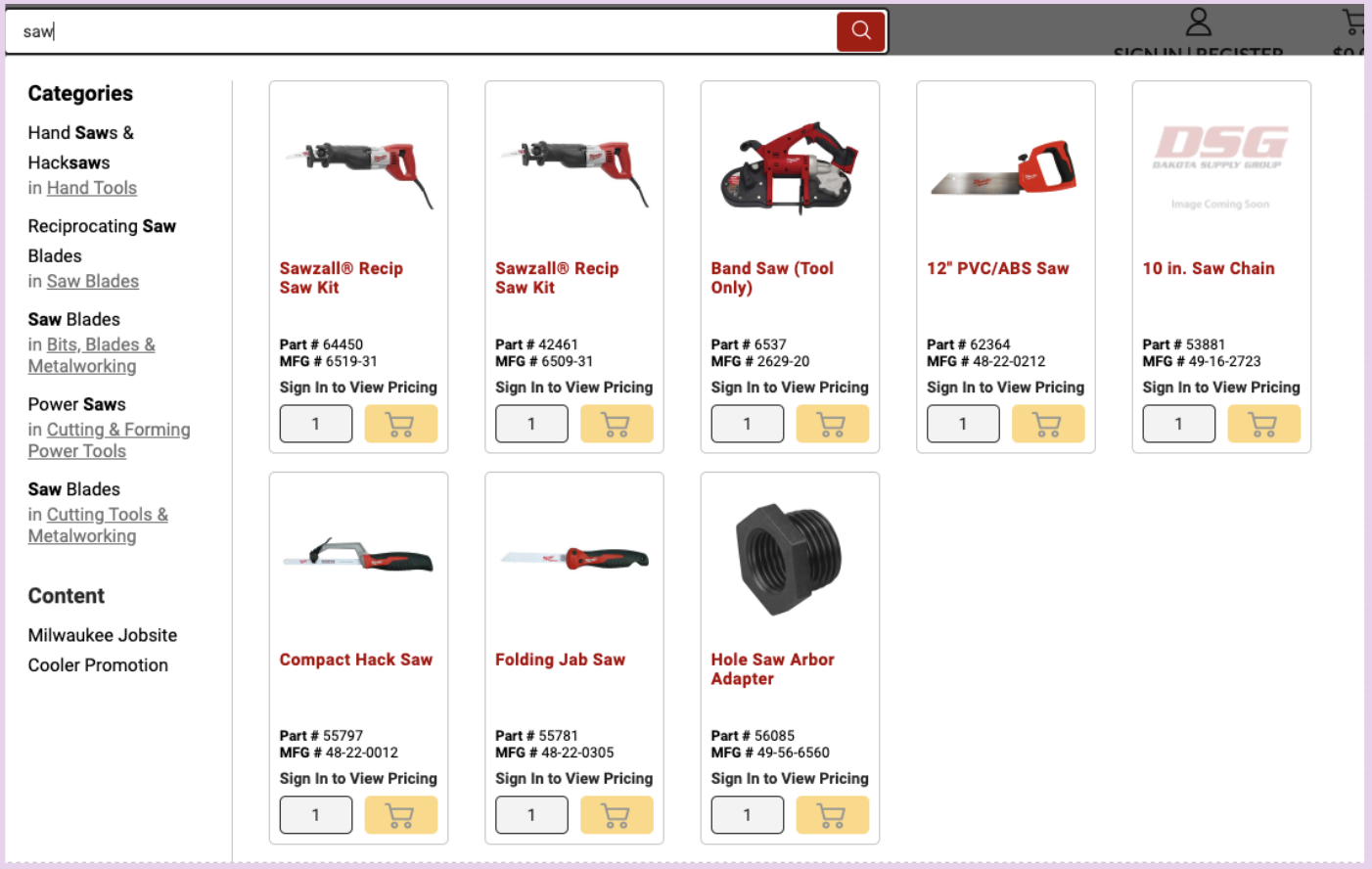Modern B2C ecommerce search fuels seamless online buying experiences by eliminating zero-result searches and processing natural language. Today, intelligent, AI-driven search has become second nature – with Open AI’s October 2024 announcement of ‘ChatGPT Search’, we can expect search to become more exhaustive, accurate, and performant.
However, some B2B companies like manufacturers, distributors, and wholesalers still struggle to implement a customer-centric search experience in the age of AI. With millennials now dominating the workforce, industrial B2B buyers expect synonymous search experiences across all platforms and services – whether it’s personal shopping or in pursuit of once-per-quarter bulk order.
Read on to learn actionable tips that ensure your B2B site search meets modern digital expectations, satisfying your customers every step of the way along their purchase journey!
The B2B site search conundrum

Manufacturers, distributors, and wholesalers definitely have unique challenges to getting ecommerce search right. Their product catalogs are usually larger, containing more SKUs and more product information, than the average commercial seller. Plus, products are often far more complex with varying attributes.
The good news is, with the right search functionality and a platform built for industrial ecommerce, you can gain control over the most critical aspects the online purchasing experience. In some cases, you’ll need to rely on your ecommerce or search vendor to make improvements, but in this article, we’ll focus on providing tips that you can implement on your own, right away.
Why B2B site search is important to the ecommerce experience
How important is site search for ecommerce? MasterB2B’s 2024 State of Ecommerce report reveals that 41% of B2B buyers prefer not to interact with sales representatives for research, and 64% research online before buying offline. This highlights the need for a seamless self-service experience, with search being crucial
Additionally, when users arrive to B2B ecommerce sites, they often have a product in mind and know exactly what they are looking for. When they can’t find the information they are looking for, frustration ensues and the sale is lost!
Let's dive into a real-life example: When Optimizely’s customer, Torrco, gave their website a customer-first makeover—think super intuitive navigation and a super easy product search— it came as no surprise that the improved user experience resulted in the following:
- 10% increase in number of orders
- 35% increase in number of lines per order
- Improved cost and time savings for internal teams
Ecommerce site search optimizations lead to powerful, seamless user experiences, and the lack thereof can trigger frustration and distrust with your ecommerce site leading to lost sales. Manufacturers, distributors, and wholesalers who are willing to invest time and resources into establishing a modern, AI-driven search strategy will deliver better experiences, outpace competitors and ultimately convert more business.
Start with product data hygiene

The first step to making on-site ecommerce search more effective is to feed the cleanest data possible into your site. You’ll want to ensure all your products have accurate and clear descriptions, titles, keywords, images, videos and other important product information.
Using Product Information Management (PIM) technology can allow you to quickly set up and efficiently manage your product catalog. Optimizely’s PIM even allows for AI-generated product descriptions. This can be helpful to clean up products with missing or identical descriptions and to scale unique, helpful, and reliable site content across your large catalog.
Once you’ve taken care of this, there are multiple steps you can take to make your on-site search experience a competitive advantage.
Next steps: 5 B2B ecommerce search best practices
-
Dissect zero search results
Start by analyzing the search results on your website, especially those returning zero results. Identify what users are searching for but not finding. Look for patterns like random product numbers, misspellings, or synonyms. This analysis will reveal opportunities to improve your search engine and better answer customer questions.
-
Add synonyms and keywords
Each industry has their own vernacular, so configuring search synonyms is especially crucial for manufacturers, distributors, and wholesalers. Think through common jargon, acronyms, and industry terms to start building a synonyms list and improve your customers’ search experience. Here are a few useful ways to use synonyms with examples from the plumbing industry:
- Acronyms – “GPF” is an acronym for “Gallons per flush”
- Abbreviations - “Sweat” can be shortened to “SWT”
- Alternate Words - “Riser” can also be referred to as “Supply Line”
- Competitive Brand Names - “Kohler” competes with “Delta”
-
Leverage boost and bury functionality
Using a platform like Optimizely Configured Commerce, you can control the order of search results with built-in boost and bury features. This is especially useful for manufacturers or distributors with large catalogs. You can prioritize newer products, highlight customers' past purchases, or apply different boost values for various customer segments.
-
Add previews of search results into the search bar
Powerful B2B commerce search engines will enable you to display images, short descriptions, part numbers and even add-to-cart options right into the search bar. Here’s an example on dsgsupply.com of a search for "saw". Notice that this inquiry delivers relevant categories and products right within the search bar. You can also preview images and easily add the products to your cart without ever leaving the search bar.

Image source: DSG Dakota Supply Group -
Use stocked products and previous purchases to inform your search
B2B buyers want quick ordering, and sorting through many search results can slow them down. Enabling a filter to show only previously purchased products can reduce search results and speed up the process. Buyers may also prefer to see only "stocked" products to avoid long lead times.
Overall, building a better ecommerce search engine helps your customers find what they need, make the purchase, and get on with their day. Better site search equates to a better overall experience. Keep in mind, effective search can also present unexpected products, creating cross-sell and up-sell opportunities to boost sales!
- Last modified: 6/25/2025 8:01:32 PM
